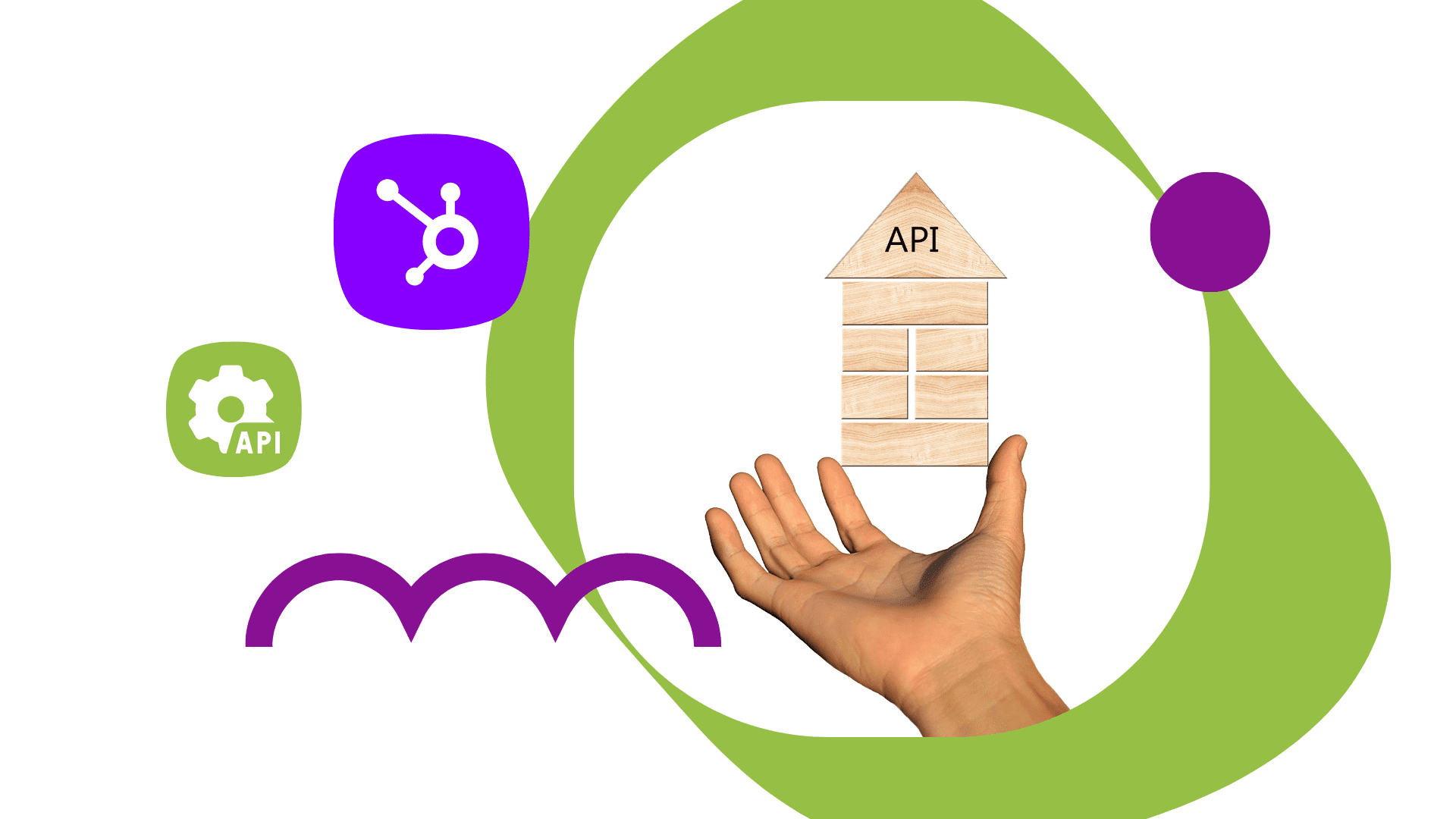


Discover the different types of API integration methods and protocols in our comprehensive guide. Learn how to leverage APIs for seamless business operations.

Ever wondered how different software applications and platforms communicate? The magic behind this interaction and data transfers is APIs (Application Programming Interfaces). These unsung tools play a crucial role in integrating diverse systems, enabling them to interact seamlessly.
Choosing the right API type can be the difference between a smooth sailing project and a shipwreck. From web APIs that allow browsers, applications, and servers to converse, internal APIs that link different parts of an application, integrating different platforms, composite APIs for complex tasks in a microservices architecture, to REST APIs popular in cloud services - there are many types at your disposal. Understanding these different API types, their data formats, data transfers capabilities, and how they work with integration middleware in an API integration framework is essential. So buckle up as we dive into the world of API integrations!
Key takeaways: API integration types can generally be categorized into four main types: Internal (or Private) APIs, which are used within a company; Partner APIs, which are shared with specific business partners; Composite APIs, which allow developers to access several endpoints in a single call; and Public (or Open) APIs, which are publicly available for use by external developers. Each type serves different purposes and offers unique benefits depending on the specific use case.

Developers can work with an assortment of API types, protocols and architectures that suit the unique needs of different applications and businesses.
API integration is a powerful technique that allows different software systems to communicate and share data with each other, enhancing their capabilities and functionalities. Understanding the different types of API integrations is vital for businesses to choose the most suitable ones for their specific needs:
Each of these API integration types serves a unique purpose and offers different opportunities for businesses, ranging from improving internal processes to fostering external collaborations and extending services. Deciding which types to use should depend on your organization's specific needs and goals. APIs exchange commands and data, and this requires clear protocols and architectures - the rules, structures and constraints that govern an API's operation.
Understanding these API types can help you determine what your organization needs and then figure out how to get started designing your API.
Different types of APIs, such as web applications and endpoints, serve different purposes. They differ in key characteristics, impacting their use cases. The tools and common subtypes of these APIs further influence their functionality. System (IT) API common subtypes: Public, Partner Common, Internal Common.
In today's digital business landscape, the use of APIs is increasingly becoming a fundamental part of software development. One of the most powerful types is the composite API, which allows developers to access multiple endpoints in a single call. This approach is particularly beneficial when dealing with complex data, as it groups tasks together, effectively creating a product bundle of information.
Composite APIs are a key part of efficient software development, as they reduce server load while improving execution speed. They are especially useful in a microservices architecture where a single function call might need to interact with multiple parts of the system.
On the other hand, a private API is a type of API that is used internally within an organization. This type of API is not exposed to external API consumers, adding an extra layer of security and control. Despite being hidden from public view, private APIs play a crucial role in improving productivity and facilitating seamless communication between different internal software systems.
API gateways are another crucial part of the API landscape. They act as a single point of entry for API consumers, managing requests and responses between multiple endpoints. This is particularly useful in a microservices architecture, where there can be numerous services that need to be accessed.
APIs use HTTP protocol to send and receive messages. This protocol allows API consumers to send queries and get responses in a structured and predictable manner. This is a fundamental aspect of API use, as it enables efficient communication between different software systems.
Private APIs are tools for internal use within an organization, primarily integrating with web applications. They enable integration between internal systems, boosting efficiency and productivity while maintaining public accessibility.
Monolithic APIs, akin to a single-unit web application, function with ease in management but exhibit less flexibility when integrating with other applications or services.
Public APIs, a type of http service integration, are open for external developers. They facilitate the creation of third-party service apps that enhance the value of the original platform.
These common subtypes each have different applications:
APIs, including public ones, come in a wide variety. The type you choose depends on your specific needs - whether it's for internal calls, adhering to a certain protocol, or opening up your platform for external innovation via REST APIS. Remember, each type serves a unique purpose and is suited best for certain scenarios over others.
Most of the time, you’ll probably be dealing with REST and SOAP APIs.

APIs (Application Programming Interfaces) come in various types and are designed with different protocols, patterns, and architectural styles. Understanding these variations is crucial for choosing the most suitable one for your specific use case:
Understanding these different API types, protocols, and architectural styles can help you choose the right tool for your specific integration needs and build more robust, effective software solutions.
SOAP, JSON, and XML are widely used data formats in web services, each offering unique strengths for data transmission and integration, depending on the specific needs of the application.
SOAP, JSON, and XML indeed represent some of the big guns in the world of public APIs, all of which can work with the REST protocol, each offering unique attributes and advantages. SOAP’s use of service interfaces instead of simple URL-based organization can also lead to greater discoverability for knowledgeable users.
SOAP API: Leveraging XML for message formatting and working well with REST protocol, SOAP API provides robustness and high security. This makes it a popular choice for use in enterprise-level applications. SOAP APIs can only work with XML data and have much more rigid requirements for requests.
JSON: As a language-independent data format, JSON is lightweight and easy to work with. It's particularly effective when used in conjunction with the REST protocol, making it a preferred choice for developers looking for simplicity and speed in data exchange.
XML: Serving as a markup language used by various web services and compatible with the REST protocol, XML offers a high degree of structure and descriptiveness. This ensures data integrity in complex applications, despite being more verbose compared to JSON.
Performance-wise, they've got their own quirks:
The case is clear - if speed's your game, go with JSON in your rest api. This holds true for all api types, including public apis.
In the world wide web, cracking the tough nut of compatibility can be especially challenging when dealing with APIs and REST.
So, you're dealing with compatibility issues in apis? It's a toss-up between SOAP and XML APIs.
In a nutshell:
Remember though, when dealing with APIs, there's no one-size-fits-all answer here - it depends on your specific needs!
GraphQL and RPC are distinct in their approaches, with GraphQL allowing clients to request specific data, while RPC focuses on executing predefined functions across networked systems.
Protocol-based APIs, like the GraphQL API and RPC API, are specific ways that servers and clients communicate. They're like languages for your server, dictating how requests and responses get formatted.
Both protocols have their strengths:
However, they also have drawbacks:
Here's where you might find these protocols:

APIs, or application programming interfaces, are crucial tools for any enterprise. They allow different software systems to communicate and exchange data. But not all APIs are created equal. There are several categories of APIs that enterprises often use:
Each category of APIs, often supported by development tools, serves unique business needs within an enterprise, playing pivotal roles in web applications. Public APIs, for instance, can attract new customers or developers who create web applications that add value to your services. Private APIs streamline internal processes in a web application environment, making it easier for teams to collaborate and innovate. Partner APIs, on the other hand, strengthen business relationships by enabling seamless collaboration between companies, enhancing the integration of web applications across different businesses.
Security is also a major consideration when choosing an API category, especially when dealing with APIs.
So how do you choose the right category of APIs? It depends on your goals as an enterprise. Are you looking to expand your developer community with APIs? Then public APIs might be the way to go. Need more control over who has access to your APIs? Consider private or partner API options.
In all cases, understanding these categories will help enterprises make informed decisions about their apis strategy, ensuring they select the best tools for their unique needs while keeping security front and center.

Free public APIs offer developers access to a wide array of functionalities and data without any cost, enabling the rapid development of innovative applications. With Latenode, you can easily set up workflows that integrate free public APIs into your projects, automating tasks, retrieving data, and enhancing your application's capabilities. This guide will walk you through the steps to effectively integrate a free public API using Latenode.
Imagine automatically pulling in weather data from a free public API to update your application in real-time. With Latenode, this can be done effortlessly. Our platform handles the entire process, from API requests to data parsing and storage, allowing you to focus on utilizing the data rather than managing it.


This workflow can be visually represented in Latenode's interface, with each node connected in sequence, from data retrieval to storage and notification.
By leveraging Latenode's visual workflow builder and seamless integration with free public APIs, you can automate data-driven tasks, reduce development time, and enhance your application's functionality without additional costs.
If you need assistance with creating your own workflow or replicating this scenario, feel free to contact our Discord community of low-code automation experts who are available to help.
Consider these factors when choosing an API design:
The user experience should be at the forefront of your APIs design decision-making process. A well-designed API can help users understand its use cases more easily, improving overall satisfaction with the APIs.
Future-proofing your chosen API design, be it REST API, web API, RPC API, or even monolithic APIs, is crucial to ensure these APIs remain functional and pertinent as technology evolves. This is not just about meeting the current system needs—it's also about anticipating the future use cases.
Here are some tips:
Remember, choosing an appropriate design for APIs isn't just about meeting current needs—it's also about anticipating future ones too!
API integration is undeniably a game-changer. We've explored different types of APIs, from SOAP to JSON and XML, each with its own purpose and set of perks. Protocols like GraphQL and RPC further broaden the capabilities of your tech stack, adding more versatility to it.
Understanding and choosing the right API design, including monolithic APIs and enterprise categories, is a crucial factor that can make or break your integration efforts. It's not just about connecting systems via APIs for mere data transfers; it's about creating seamless experiences that drive efficiency and innovation in your web application.
So, what's next? Dive in! Explore these APIs, experiment with designs, and discover what works best for your specific use cases. Remember: knowledge is power, but the application is key.
In conclusion, the four main types of API integration, including monolithic APIs, each serve a unique purpose in data exchange and application communication:
Each type of API integration offers unique opportunities for businesses, from improving internal processes to fostering external collaborations and extending services. A sound API integration strategy should consider which types to implement based on the organization's specific needs and goals. APIs contain a collection of actions (or requests and responses) that developers can access.
In the world of coding, the API gateway plays a pivotal role in managing and routing requests to the correct services. It acts as a single point of entry for API consumers, handling requests and responses between multiple endpoints. This is particularly useful in a microservices architecture where numerous services need to be accessed. For instance, when a query is made to a particular service, the API gateway ensures that the request reaches the correct service and the response is returned to the user.
Moreover, the API gateway provides a layer of abstraction, allowing developers to change the underlying services without affecting the client's code. This ensures that the code remains clean and efficient, reducing the complexity of managing different services.
In the context of a blog post, the API gateway can be used to manage different functionalities such as user authentication, post creation, comment management, etc. Each of these functionalities can be handled by different services, and the API gateway ensures that the requests and responses are routed correctly.